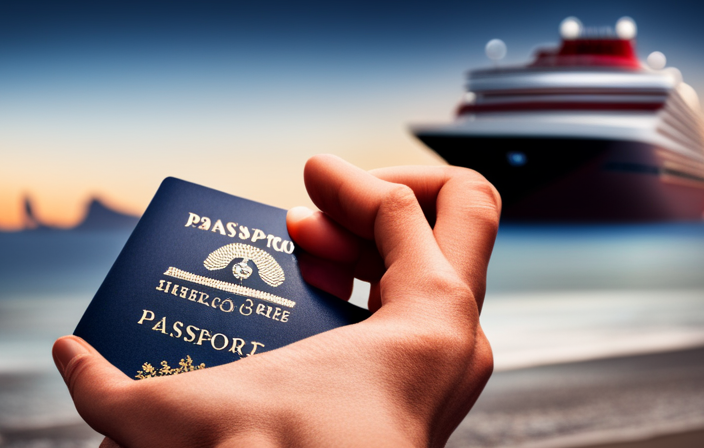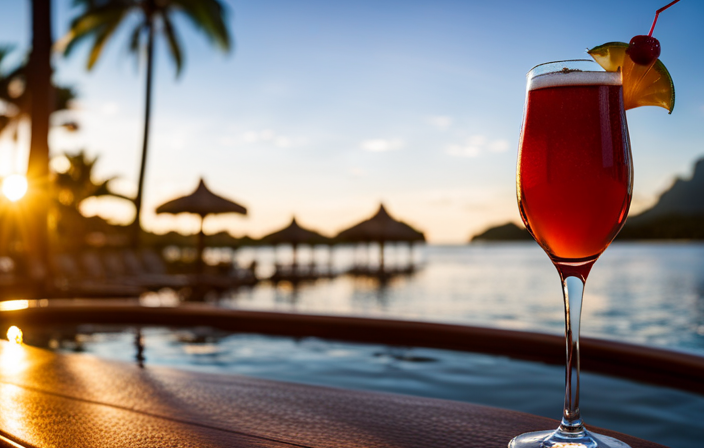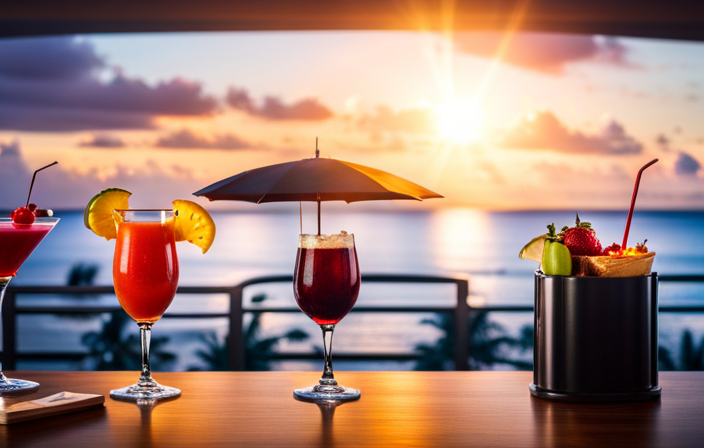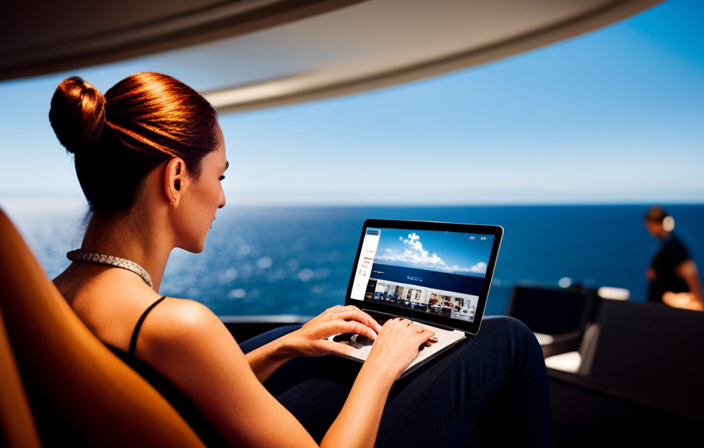Cruise News and Updates
Handling Travel Delays: When A Delay Jeopardizes Your Cruise
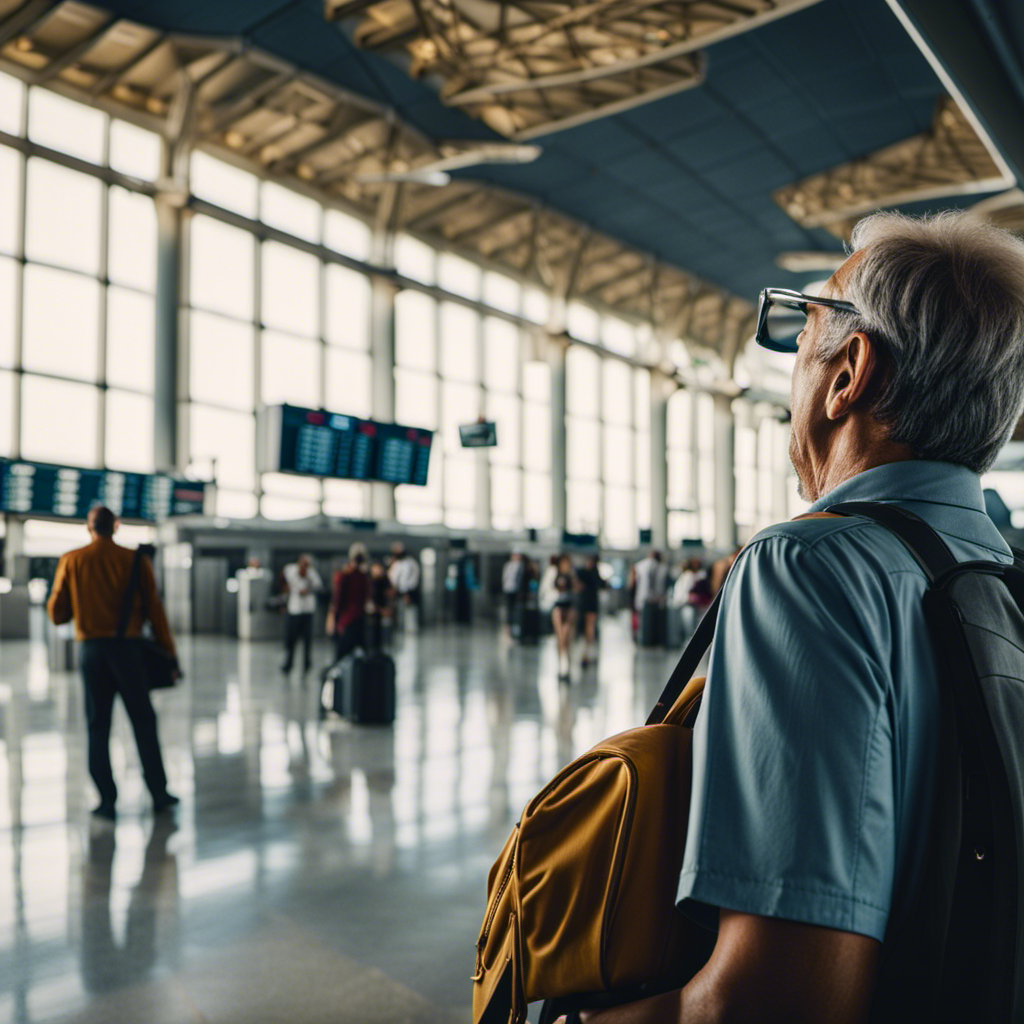
Picture this situation: The countdown on your calendar has been filled with anticipation, as you’ve been eagerly preparing for your much-anticipated cruise vacation. Your luggage is ready, your excursions planned out, and you’re set to set sail on what promises to be an idyllic getaway. But then, out of the blue, an unexpected travel delay threatens to derail your itinerary and possibly strand you.
It’s a situation that no traveler wants to find themselves in. That’s why it’s crucial to be prepared and take immediate action when faced with a delay that jeopardizes your cruise.
In this article, we’ll explore a comprehensive guide to handling travel delays and ensuring that your dream cruise doesn’t turn into a nightmare. From proactive steps to take before your trip, to the actions to consider during a delay, and the options available if you miss your cruise departure, we’ve got you covered.
So buckle up, because we’re about to navigate through the stormy seas of travel delays and come out on the other side with a seamless cruise experience.
Key Takeaways
- Allocate plenty of time and consider flying in at least one day before your cruise to avoid travel delays.
- Take immediate action when facing a travel delay and explore alternative options to still make your cruise.
- If you miss the cruise departure, consider booking flights through the cruise line or flying to the first port of call.
- Familiarize yourself with airline rights and regulations, and know your entitlements for refunds and compensation in case of flight delays or cancellations.
Preparing for the Cruise
I always make sure to allocate plenty of time to get to my cruise to avoid travel delays. It’s essential to start the vacation stress-free and not rush to the port.
One of the first things I do is pack all the necessary essentials. This includes travel documents, medications, appropriate clothing for different activities, and any personal items I can’t live without.
Researching and choosing the right cruise line is also crucial. Each cruise line has its own unique offerings and atmosphere, so it’s essential to find one that aligns with your preferences. Some cater to families with children, while others focus on luxury and relaxation.
By taking the time to prepare and select the right cruise line, I can ensure a smooth and enjoyable journey from the moment I step foot on the ship.
Actions to Take During a Travel Delay
When facing a travel delay, it is important to take immediate action and explore alternative options to reach your destination. Communication strategies play a crucial role in navigating through this stressful situation. Get on the phone or chat with your airline or travel agent ASAP to explore available options. Additionally, it is essential to call the cruise line and inform them about your situation. Royal Caribbean and Norwegian Cruise Line have emergency teams in place to assist passengers in travel delays. Alternative transportation options can also be considered. Check for flights into alternative airports or explore alternative airlines that might have flights to the same destination. If feasible, renting a car or driving to the port or a nearby airport can be a viable solution. Remember to stay calm, be proactive, and communicate effectively to ensure a smooth resolution to your travel delay.
| Communication Strategies | Alternative Transportation Options |
|---|---|
| – Get on the phone or chat with your airline or travel agent ASAP | – Consider flying into an alternative airport |
| – Call the cruise line to inform them about your situation | – Check alternative airlines that might have flights to the same destination |
| – Utilize emergency teams offered by Royal Caribbean and Norwegian Cruise Line | – Rent a car or drive to the port or a nearby airport |
Options if You Miss the Cruise Departure
If the ship sets sail without you, your dreams of cruising may vanish into thin air. However, there are options available if you miss the cruise departure due to a travel delay.
One option is to book flights through the cruise line, as they can provide additional protection and benefits.
Another option is to fly to the cruise ship’s first port of call if you can’t make it on time. It’s important to keep proper documentation if you plan to meet the cruise ship at the first port.
Additionally, if you have travel insurance, you may be able to file an insurance claim for the missed cruise. Remember to review your travel insurance policy to understand the coverage and requirements in case of a missed departure.
Rights and Compensation for Flight Delays
One option for passengers experiencing flight disruptions is to familiarize themselves with their rights and available compensation. When faced with flight delays or cancellations that jeopardize your cruise, it’s important to know that you may be entitled to compensation.
Understanding airline regulations and knowing your rights can help you navigate these situations more effectively. In the event of a flight delay or cancellation, passengers have the right to a refund for the affected flight. Additionally, airlines may try to rebook you on a later flight or provide compensation for hotel or car rental expenses incurred due to the delay.
It’s also worth noting that some high-end travel credit cards offer coverage for flight disruptions, providing additional protection and benefits. If you find yourself in this situation, consider filing compensation claims and advocating for your rights as a passenger.
Additional Tips and Information
I highly recommend considering travel insurance as a safety net, just like a life jacket on a rocky boat, to protect your investment and provide financial relief in case of any unexpected circumstances.
Travel insurance benefits can include coverage for trip delays, cancellations, and missed connections. It can also provide reimbursement for hotel or car rental expenses if you’re stranded due to a travel delay.
Additionally, familiarizing yourself with airline regulations is crucial. Knowing your rights as an airline passenger can help you navigate through flight delays or cancellations. Remember that DOT regulations entitle passengers to a refund for canceled flights, and airlines may try to book you on a later flight or a different airline. Don’t hesitate to ask for additional compensation for any inconveniences caused.
Lastly, some airlines offer discounts or loyalty miles to disgruntled passengers, so it’s worth exploring those options as well.
Frequently Asked Questions
What should I do if I miss my cruise due to a travel delay and I don’t have travel insurance?
If I miss my cruise without travel insurance, there are still options available. I can try booking flights through the cruise line for added protection, fly to the first port of call, or file an insurance claim if applicable.
Can I still join the cruise at a later port if I miss the departure?
If you miss the cruise departure due to a travel delay, you may still be able to join the cruise at a later port. Check with the cruise line and consider flying to the first port of call if necessary.
How long does it usually take for airlines to provide compensation for flight delays or cancellations?
Compensation processing time for flight delays or cancellations varies by airline. In my experience, it usually takes a few weeks to receive reimbursement. Each airline has its own procedures, so it’s best to contact them directly for more information.
Are there any specific documents I need to have if I plan to meet the cruise ship at the first port?
To meet the cruise ship at the first port, you’ll need essential documents like your passport, identification, and any necessary visas. These documents are crucial for boarding the ship and ensuring a smooth journey ahead.
What should I do if I experience a flight delay or cancellation while already on the cruise?
Experiencing a flight delay or cancellation while on a cruise can have consequences such as missing ports of call or activities. Options for rebooking or rescheduling the missed cruise due to a travel delay depend on the cruise line’s policies.
Meet Asra, a talented and adventurous writer who infuses her passion for exploration into every word she writes. Asra’s love for storytelling and her insatiable curiosity about the world make her an invaluable asset to the Voyager Info team.
From a young age, Asra was drawn to the power of words and their ability to transport readers to far-off lands and magical realms. Her fascination with travel and cultures from around the globe fueled her desire to become a travel writer, and she set out on a journey to turn her dreams into reality.
Cruise News and Updates
Safely Experience And Support The Future Of Cruises In 2021
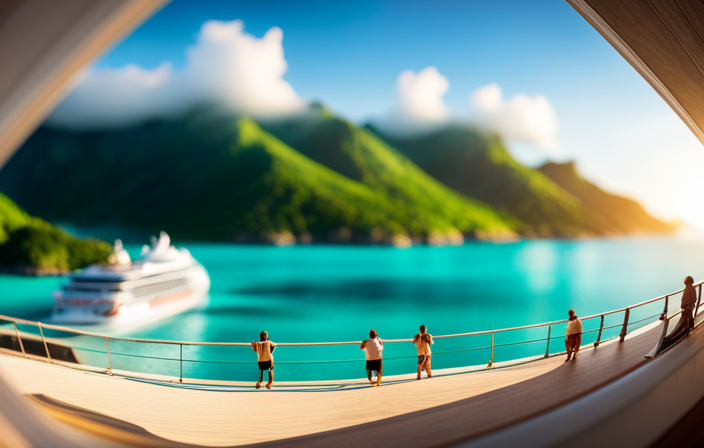
Howdy! While we make our way through the unpredictable challenges brought on by the global health crisis, the cruise industry is undoubtedly one of the hardest hit sectors. However, do not despair, fellow journey-seekers, as it appears that there is a glimmer of hope on the horizon!
In this article, we will delve into the exciting world of cruises in 2021 and explore how we can safely experience and support their future.
Like a sturdy anchor, the Centers for Disease Control and Prevention (CDC) has laid out requirements for test cruise volunteers, ensuring that we set sail with utmost caution. These requirements include being 18 years or older, fully vaccinated against COVID-19 or having no high-risk medical conditions, and agreeing to COVID-19 testing. These test cruises serve as a simulation, allowing cruise lines to fine-tune their operations and ensure the safety of both crew and passengers.
So, grab your life jackets and join me as we embark on a journey to discover the ins and outs of these test cruises. From embarkation to dining, entertainment to medical evacuation procedures, we will explore it all.
Let’s set sail and support the future of cruises in 2021!
Key Takeaways
- CDC requirements for test cruise volunteers include being 18 years or older, fully vaccinated against COVID-19 or having no high-risk medical conditions, and undergoing COVID-19 symptom evaluations before embarkation and disembarkation.
- The purpose of test cruises is to ensure safe operation during the global health crisis and simulate the passenger experience.
- Test cruises must be at least 2-7 days in duration with at least one overnight stay, and the CDC recommends a minimum voyage length of 3 days with 2 overnight stays.
- Simulated activities on test cruises include embarkation and disembarkation procedures, dining, entertainment, and medical evacuation procedures, isolation and quarantine measures, and protocols for recreational activities and shore excursions.
What is it?
I’ll explain what a test cruise is in 2021. A test cruise is a simulated voyage that cruise lines conduct to ensure safe operation despite the global health crisis. These cruises serve to test and evaluate the implementation of safety measures and protocols.
The purpose is to simulate the passenger experience and identify any areas that may need improvement. Test cruises typically last between 2-7 days, with at least one overnight stay. Safety is of utmost importance, and all volunteers must adhere to CDC requirements, such as being fully vaccinated against COVID-19 and undergoing pre and post-disembarkation COVID-19 testing.
While test cruises are not paid and cannot be part of employment conditions, volunteers have the opportunity to support the future of the cruise industry and contribute to the development of enhanced safety protocols.
Requirements for Volunteers
To volunteer for a test cruise in 2021, I must meet the CDC requirements, including being fully vaccinated against COVID-19 or having no high-risk medical conditions, and I must be willing to undergo COVID-19 testing before and after the cruise.
The evaluation process for volunteers will involve assessing their vaccination status and checking for any COVID-19 symptoms before embarkation and disembarkation.
The purpose of this evaluation is to ensure the safety of all participants and to simulate a real passenger experience. It is crucial for volunteers to comply with these requirements in order to support the future of cruises in 2021 and to help the industry operate safely amidst the global health crisis.
By following these guidelines, we can contribute to the development of effective protocols and measures that will allow cruise ships to resume operations in a responsible manner.
Test Cruise Details
The test cruises will have a duration of 2-7 days and will include at least one overnight stay. These cruises are designed to simulate the passenger experience and ensure safe operation despite the ongoing global health crisis. During the test cruises, various activities will be simulated, including embarkation and disembarkation procedures, dining, entertainment, and medical evacuation protocols.
Additionally, there will be simulated recreational activities such as casinos and spa services, as well as protocols for private-island and port of call shore excursions.
As for the sign-up process and selection for test cruises, currently, only Royal Caribbean has provided a sign-up form for volunteers. In the first week, they received 100,000 signatures. However, there haven’t been any announcements or updates regarding sign-up methods from Norwegian, Carnival, MSC, and Disney. The volunteer selection process for test cruises hasn’t been disclosed at this time.
Frequently Asked Questions
Can I bring my own food and beverages on a test cruise?
On a test cruise, passengers are not allowed to bring their own food and beverages. The cruise line provides all meals and drinks as part of the simulated passenger experience. Dietary restrictions can be accommodated upon request.
Will test cruise volunteers have access to all onboard amenities and services?
Test cruise volunteers are expected to have access to all onboard amenities and services. However, it is important to note that volunteers are not compensated for their participation in the test cruises.
Are there any restrictions on the number of passengers allowed on a test cruise?
Passenger capacity limits for test cruises are determined by the CDC. However, cruise lines that require vaccinations for passengers can bypass test cruises. Vaccination requirements are in place to ensure the safety of all participants.
How often will test cruises be conducted in 2021?
Test cruises will be conducted multiple times in 2021 as part of the cruise industry recovery and to ensure health and safety measures. The exact frequency of test cruises has not been specified.
Will test cruise volunteers be compensated in any way for their participation?
Test cruise volunteers will not be compensated for their participation. However, they will benefit from the opportunity to experience a simulated cruise, contribute to the safe operation of cruises, and help shape the future of the industry.
Claire, a creative soul with an unquenchable thirst for storytelling, is an integral part of the Voyager Info team. As a dedicated writer, she weaves captivating narratives that transport readers to enchanting cruise destinations and beyond.
Claire’s love affair with writing began at an early age when she discovered the magic of words and their ability to craft worlds and emotions. Her innate curiosity led her to explore various literary genres, but it was travel writing that truly captured her heart. Drawing inspiration from her own globetrotting adventures and encounters with diverse cultures, Claire embarked on a journey to become a travel writer par excellence.
Cruise News and Updates
How Cruise Ships Operate: Profits, Strategies, And Continuous Operation
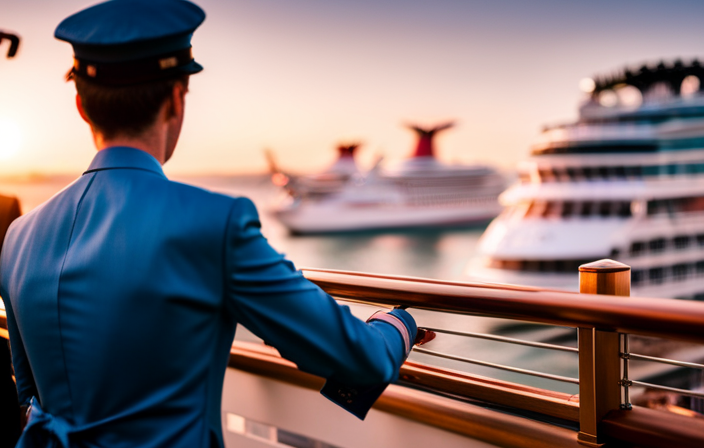
Hello! We are excited to invite you to explore the captivating world of cruise ships and learn about how they operate.
Picture this: cruise ships, those floating paradises on the sea, are not only about providing unforgettable vacations but also about generating impressive profits. In this article, we’ll explore the strategies and continuous operation that keep these magnificent vessels afloat financially.
Did you know that ticket prices for mainstream cruise lines average around $1,293? But that’s just the beginning. Additional onboard spending can add up to a whopping $429 per passenger. From casinos to spas, shopping to dining, and everything in between, cruise lines have cleverly designed their ships to maximize revenue from various sources.
But it doesn’t stop there. We’ll also uncover the secrets behind the ownership and categorization of cruise lines. From Carnival Corporation to Royal Caribbean Group and Norwegian Cruise Line Holdings, these three corporations dominate the industry with their multiple brands.
So, fasten your seatbelts (or life jackets) and get ready to embark on a journey through the intriguing world of cruise ship operations.
Let’s set sail!
Key Takeaways
- Cruise ship ticket prices include both the base fare and additional onboard spending, such as casinos, spas, shopping, dining, Wi-Fi, and drinks.
- Main sources of profit for cruise lines are casinos, spas, shopping, dining, Wi-Fi, and drinks.
- Placement of common areas like lounges, bars, and casinos strategically along passenger routes helps generate more revenue.
- Cruise lines employ various profit-making strategies, such as making most of the money upfront for premium cruise lines and catering to passengers who spend more time in ports for luxury cruise lines.
How They Make Money
I make money by offering various sources of entertainment and amenities on board, such as casinos, spas, shopping, dining, Wi-Fi, and drinks. These are the key sources of profit for cruise lines. Onboard revenue sources are crucial in generating income for the company.
Passengers spend money on these amenities and entertainment options, contributing to the overall profitability of the cruise line. Additionally, we generate revenue through passenger spending on private islands. By leasing private islands from foreign countries, we provide passengers with unique experiences, such as complimentary beach chairs and BBQ lunches. This not only enhances their vacation but also increases their spending on the island.
These onboard revenue sources and passenger spending on private islands play a significant role in ensuring the financial success of the cruise line.
Continuous Operation Process
Year-round, cruise liners tirelessly navigate the seas, seamlessly switching regions during repositioning cruises, and swiftly preparing for the next voyage on turnaround day. Crew management plays a crucial role in ensuring continuous operation. Cruise lines hire crew members from foreign countries, allowing them to save costs while maintaining a diverse and efficient workforce. These crew members work tirelessly to provide exceptional service to passengers, ensuring their comfort and satisfaction throughout the voyage.
Repositioning cruises are another aspect of continuous operation. These cruises occur when ships move from one region to another, often during seasonal changes. During repositioning cruises, cruise lines take the opportunity to offer unique itineraries and experiences to passengers. This allows them to generate additional income while optimizing the usage of their fleet.
Incorporating a 3 column and 5 row table:
| Continuous Operation Process | |
|---|---|
| Year-round operation | Without breaks |
| Repositioning cruises | Ships switch regions |
| Turnaround day | Quick disembarkation and preparation for the next cruise |
| Crew management | Hiring crew members from foreign countries |
| Additional income | Visiting multiple ports |
Ownership and Categorization
Carnival Corporation, Royal Caribbean Group, and Norwegian Cruise Line Holdings are the three corporations that own multiple cruise line brands. These corporations have a complex ownership structure, with each owning several cruise lines that cater to different market segments.
Carnival Corporation, for example, owns popular mainstream brands such as Carnival Cruise Line and Princess Cruises, while Royal Caribbean Group owns premium brands like Royal Caribbean International and Celebrity Cruises. Norwegian Cruise Line Holdings, on the other hand, owns Norwegian Cruise Line, which falls into the mainstream category.
Differentiation factors play a crucial role in the ownership structure. Each corporation strategically positions its cruise line brands to cater to different types of passengers. This allows them to capture a wider market share and maximize profits.
From mainstream to luxury, these corporations have created a diverse range of cruise lines that offer unique experiences and amenities. By offering different levels of service, accommodations, and onboard activities, they are able to attract and retain passengers with varying preferences and budgets.
The ownership and categorization of cruise line brands play a significant role in the overall profitability and success of these corporations.
Frequently Asked Questions
How do cruise ships handle medical emergencies and provide medical care to passengers on board?
Cruise ship medical facilities are equipped to handle medical emergencies. The crew receives emergency response training, and medical personnel are available on board. Passengers can receive medical care and treatments while at sea.
What safety measures are in place to prevent accidents or incidents on cruise ships?
Cruise ship safety measures include thorough training for crew members, regular safety drills, strict adherence to international safety regulations, advanced navigation systems, surveillance cameras, and emergency response protocols to prevent accidents and incidents onboard.
How do cruise ships handle waste management and environmental sustainability?
Ah, waste management and environmental sustainability, the unsung heroes of cruising. Cruise ships tackle these challenges through advanced waste treatment systems, recycling programs, and energy-efficient technologies, ensuring a greener voyage for all.
What is the process for hiring and training crew members on cruise ships?
The hiring process for crew members on cruise ships involves recruiting from foreign countries, conducting interviews and background checks, and providing training in various areas such as safety, customer service, and emergency procedures.
How do cruise ships handle security and ensure the safety of passengers and their belongings?
Cruise ship security is a top priority, ensuring passenger safety and protecting their belongings. Vigilant surveillance systems, trained security staff, and strict access control measures are implemented to prevent incidents and swiftly respond to emergencies.
Claire, a creative soul with an unquenchable thirst for storytelling, is an integral part of the Voyager Info team. As a dedicated writer, she weaves captivating narratives that transport readers to enchanting cruise destinations and beyond.
Claire’s love affair with writing began at an early age when she discovered the magic of words and their ability to craft worlds and emotions. Her innate curiosity led her to explore various literary genres, but it was travel writing that truly captured her heart. Drawing inspiration from her own globetrotting adventures and encounters with diverse cultures, Claire embarked on a journey to become a travel writer par excellence.
Cruise News and Updates
The Fascinating World Of Cruise Ships: Size, Power, And Environmental Impact
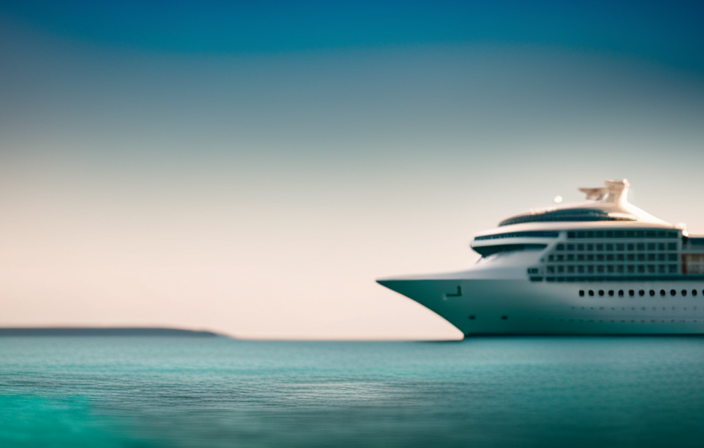
Oh, the world of cruise ships. It’s a mesmerizing realm, filled with magnificent vessels sailing the vast oceans, taking passengers to distant, enchanting locations.
The sheer size and power of these floating marvels never fail to astound me. From their towering lengths, ranging from 900 to 1,100 feet, to their impressive fuel tanks, holding a staggering 1 to 2 million gallons of fuel, cruise ships are a testament to human engineering. Some even harness the energy of liquefied natural gas, with engines so colossal they could fill a room. It’s truly awe-inspiring.
Yet, amidst this marvel, we must also consider the environmental impact. Many cruise lines still rely on diesel-powered engines, but the use of LNG reduces carbon emissions by a significant 30%.
As a passionate traveler and writer, I am eager to delve into the fascinating world of cruise ships, exploring their size, power, and environmental impact. Join me as we embark on this journey of discovery and exploration.
Key Takeaways
- Cruise ships are massive vessels that can range in length from 900 to 1,100 feet.
- Some cruise ships use liquefied natural gas (LNG) as fuel, reducing carbon emissions by 30%.
- The environmental impact of cruise ships, particularly diesel-powered engines, is a concern and contributes to air pollution and climate change.
- The adoption of sustainable cruise practices, including the use of LNG fuel, is crucial for a more sustainable future and to mitigate the environmental impact of cruise ships.
Cruise Ship Specifications
Cruise ship specifications are an important aspect to consider when understanding their size, power, and environmental impact. These massive vessels can range in length from 900 to 1,100 feet, accommodating thousands of passengers and crew members.
Fuel consumption is a significant consideration, with cruise ships typically carrying 1-2 million gallons of fuel in their tanks. Some ships are now incorporating LNG tanks, which reduce carbon emissions by 30%.
The shipbuilding process is a complex endeavor, with engines playing a crucial role in powering these floating cities. Cruise ships are equipped with 4-6 engines, each generating an impressive 18.5 megawatts of power. These engines, measuring up to 45 feet in length and 27 feet in height, propel the ship at an average speed of 18-22 knots.
Additionally, cruise ships are equipped with two anchors weighing 10-20 tons each, ensuring stability while at port.
Engine and Power Details
When it comes to engine and power details, it’s important to consider the environmental impact and the need for alternative fuel sources.
Cruise ship propulsion plays a crucial role in determining the ship’s fuel efficiency and carbon emissions. Most cruise ships are equipped with 4-6 engines, each generating 18.5 megawatts of power. These engines can measure up to 45 feet in length and 27 feet in height.
While many cruise lines still rely on diesel-powered engines, there is a growing shift towards using liquefied natural gas (LNG) as a more environmentally friendly fuel source. LNG-powered ships can reduce carbon emissions by up to 30%.
As the cruise industry continues to evolve, it’s crucial for shipbuilders and operators to prioritize fuel efficiency and explore sustainable propulsion options to minimize their environmental impact.
Environmental Impact
As an enthusiast of the cruise industry, I am deeply concerned about the ecological consequences of traditional diesel-powered engines commonly used on cruise ships. Cruise ship emissions have a significant impact on the environment, contributing to air pollution and climate change. However, there are sustainable cruise practices being implemented to address these concerns. One such practice is the use of LNG-powered fuel, which reduces carbon emissions by 30% compared to diesel. This is a positive step towards minimizing the environmental impact of cruise ships.
To visualize this information, here is a table highlighting the environmental impact of cruise ship emissions:
| Environmental Impact | Consequences |
|---|---|
| Air pollution | Increased respiratory |
| problems | |
| Climate change | Rising sea levels |
| and extreme weather |
By adopting sustainable cruise practices and transitioning to cleaner fuel sources like LNG, cruise ships can help mitigate their environmental footprint and contribute to a more sustainable future.
Frequently Asked Questions
What are some popular destinations for cruise ships?
Top rated cruise ship destinations include the Caribbean, Mediterranean, Alaska, and the Baltic Sea. These locations offer stunning scenery, cultural experiences, and a variety of activities. The cruise industry is adopting eco-friendly practices to reduce its environmental impact.
How many passengers can a typical cruise ship accommodate?
A typical cruise ship can accommodate thousands of passengers, resembling a floating city. With various cruise ship designs catering to different market segments, the cruise ship market continues to evolve to meet the needs of travelers worldwide.
What are some unique amenities or features found on modern cruise ships?
Luxury accommodations and innovative dining experiences are some unique amenities found on modern cruise ships. Passengers can enjoy spacious suites, private balconies, gourmet restaurants, and specialty dining options that cater to various tastes and dietary preferences.
How do cruise ship companies ensure the safety and security of their passengers?
Cruise ship companies ensure the safety and security of their passengers through various measures. They have well-equipped medical facilities onboard and conduct regular emergency drills to prepare passengers for any potential emergencies that may arise during their voyage.
What are some common activities or entertainment options available on cruise ships?
Cruise ships offer a wide range of activities and entertainment options. From gourmet dining experiences to luxurious onboard spa and wellness facilities, passengers can indulge in relaxation and enjoy a variety of amenities during their cruise vacation.
Claire, a creative soul with an unquenchable thirst for storytelling, is an integral part of the Voyager Info team. As a dedicated writer, she weaves captivating narratives that transport readers to enchanting cruise destinations and beyond.
Claire’s love affair with writing began at an early age when she discovered the magic of words and their ability to craft worlds and emotions. Her innate curiosity led her to explore various literary genres, but it was travel writing that truly captured her heart. Drawing inspiration from her own globetrotting adventures and encounters with diverse cultures, Claire embarked on a journey to become a travel writer par excellence.
-

 Cruise FAQs3 days ago
Cruise FAQs3 days agoHow To Turn On Cruise Control Tesla Model 3
-

 Cruise FAQs3 months ago
Cruise FAQs3 months agoWhat Is The Weather Like On A Transatlantic Cruise In April
-

 Cruise FAQs3 days ago
Cruise FAQs3 days agoHow To Set Cruise Control Tesla Model Y
-

 Cruise FAQs3 months ago
Cruise FAQs3 months agoHow to Contact Someone on a Carnival Cruise Ship
-
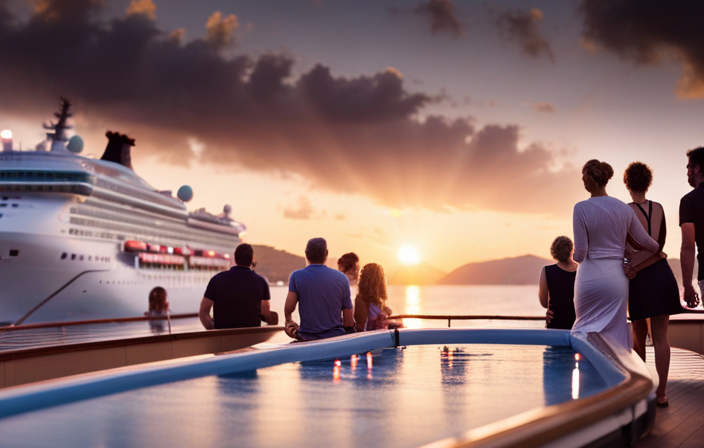
 Cruise Lines3 months ago
Cruise Lines3 months agoWhat Is The Average Age Of Passengers By Cruise Line
-

 Onboard Experience1 week ago
Onboard Experience1 week agoFinding Deals On Unsold Cruise Cabins: Tips And Strategies
-
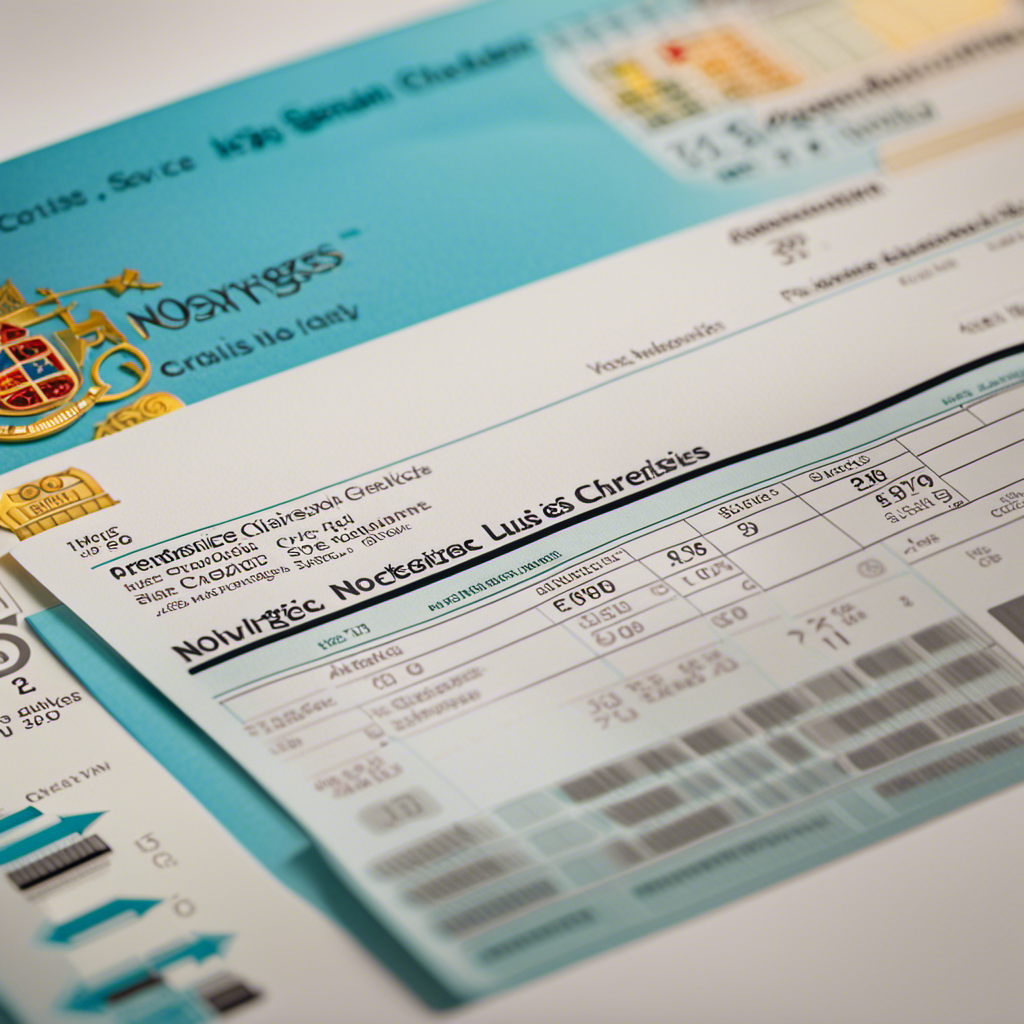
 Cruise Lines3 months ago
Cruise Lines3 months agoDecoding Norwegian Cruise Line’s Gratuities and Service Charges
-
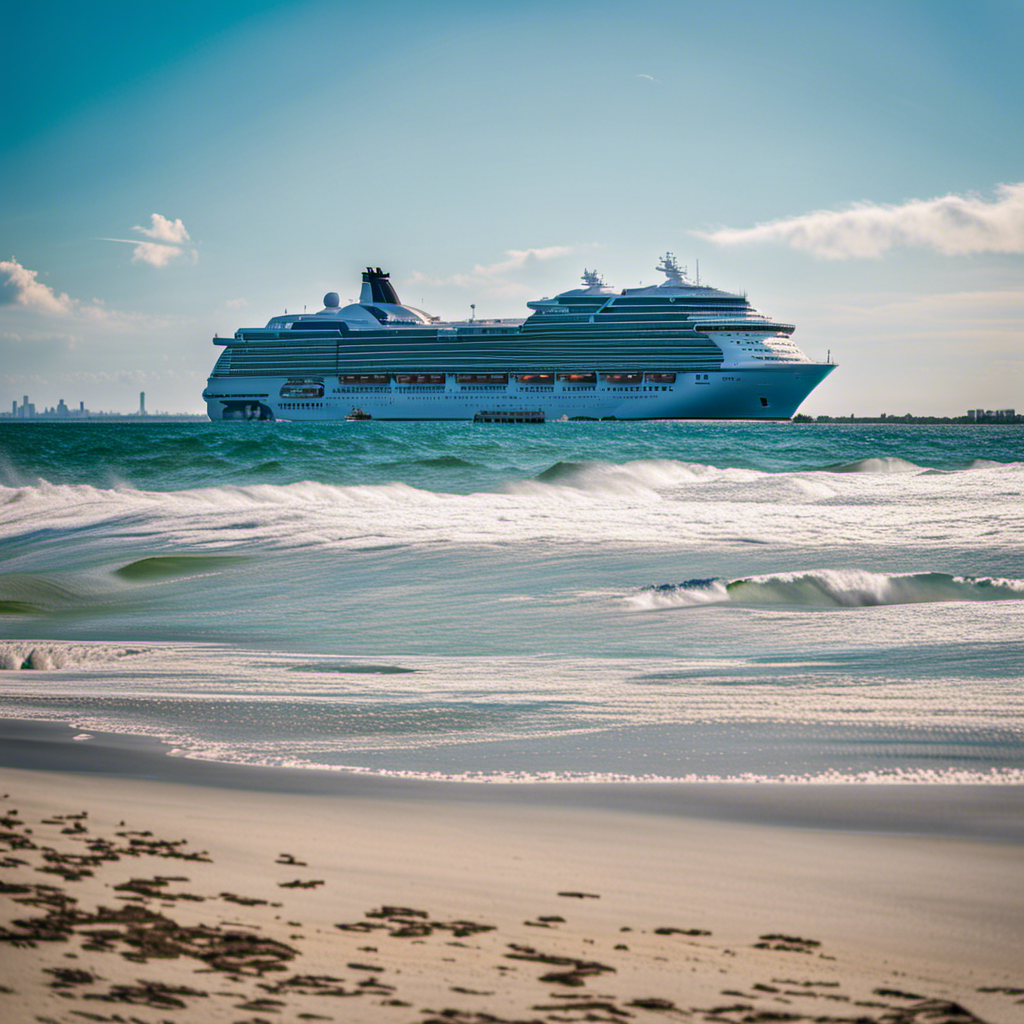
 Cruise Lines3 months ago
Cruise Lines3 months agoWhat Cruise Lines Depart From North Carolina








